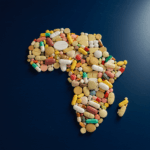Ghana’s healthcare providers market is entering a phase of steady expansion, with total revenues projected to reach US$1.86 billion in 2025. This figure represents a marginal year-on-year increase of 0.4 percent and underscores the sector’s resilience amid broader economic fluctuations. Across hospitals, ambulatory service providers, and long-term care facilities, stakeholders are mobilizing to capitalize on this growth while addressing persistent urban–rural disparities in access and quality of care.
Analysts forecast an average annual growth rate (CAGR) of 5.81 percent for the healthcare providers market between 2025 and 2029, a trajectory that would lift revenues to US$2.33 billion by the end of the period. In per-capita terms, Ghanaians are expected to generate US$53.10 in provider revenues in 2025, reflecting both rising demand for health services and incremental improvements in insurance coverage. These figures position Ghana among the more dynamic healthcare markets in West Africa, even as it remains far smaller than global leaders like the United States, which will register provider revenues of US$3.24 trillion in the same year.
The sector’s mild yet consistent growth is driven by several interlocking factors. First, government and private investments in healthcare infrastructure have steadily improved facility capacity, enabling more complex treatments and expanding outpatient networks. Second, rising incomes, particularly in urban centers, have boosted consumer willingness to pay for quality services. Third, policy efforts to broaden the National Health Insurance Scheme have reduced out-of-pocket barriers, drawing previously uninsured populations into the formal system. Together, these dynamics are creating a more favorable environment for both domestic and international healthcare investors.
Consumer behavior is shifting in ways that deeply influence service offerings. “Consumers in Ghana are increasingly prioritizing preventive healthcare and wellness services, reflecting a cultural shift towards proactive health management,” notes Statista’s analyst report. This shift manifests in the growing popularity of health screenings, wellness programs, and lifestyle-oriented interventions. Social media and targeted awareness campaigns have further empowered patients to research treatment options and demand personalized care pathways, prompting providers to diversify into holistic and value-added services.
In response, healthcare facilities are reimagining their models to integrate wellness and preventive care alongside traditional medical treatments. Hospitals and clinics are embedding nutrition counseling, mental health support, and chronic-disease management into their service portfolios. Community health initiatives, including mobile clinics that deliver immunizations and screenings to remote areas, exemplify this trend toward decentralization and outreach. As providers extend their footprints into underserved regions, they are not only expanding market share but also advancing public-health objectives by enabling earlier disease detection and intervention.
Ghana’s unique cultural landscape further shapes market evolution. Traditional healing practices coexist with modern medicine, and regulatory frameworks are adapting to encourage synergies between the two. Partnerships between herbalists and biomedical practitioners are emerging, supported by evolving policy guidelines that recognize the value of culturally resonant care. Meanwhile, geographic disparities, where urban residents enjoy multiple provider options while rural communities face facility shortages, underscore the need for tailored solutions. Mobile health units and telemedicine platforms are gaining traction as means to bridge these divides.
Underlying macroeconomic forces also play a pivotal role. Ghana’s GDP growth, propelled by agriculture and service sectors, provides fiscal headroom for public health spending and private-sector expansion. Government strategies to bolster health insurance coverage and upgrade infrastructure from district-level hospitals to primary-care centers, are critical to sustaining market momentum. At the same time, global economic shifts, including fluctuations in foreign aid and investment flows, create both opportunities and vulnerabilities for financing large-scale health projects.
As the healthcare providers market matures, stakeholders face an imperative to innovate and collaborate. Digital health platforms, partnership models that unite traditional and modern practitioners, and integrated care networks represent pathways to capture emerging consumer segments. Regulatory bodies must continue refining standards to ensure quality and safety across diverse delivery channels. For investors, the projected increase in market volume to US$2.33 billion by 2029 offers both assurance of sustained demand and a call to action to align service models with evolving patient expectations and national health priorities.
Ultimately, Ghana’s healthcare providers market stands at a crossroads between consolidation and transformation. By marrying infrastructure investments with consumer-centric innovations, and by weaving traditional practices into a modern framework, the sector can realize its potential to deliver equitable, high-quality care to all citizens. The coming years will test the agility of providers, the foresight of policymakers, and the resilience of regulatory systems as Ghana pursues a vision of healthier communities and a robust, sustainable health economy.
Source: Healthcare Providers – Ghana | Statista Market Forecast



